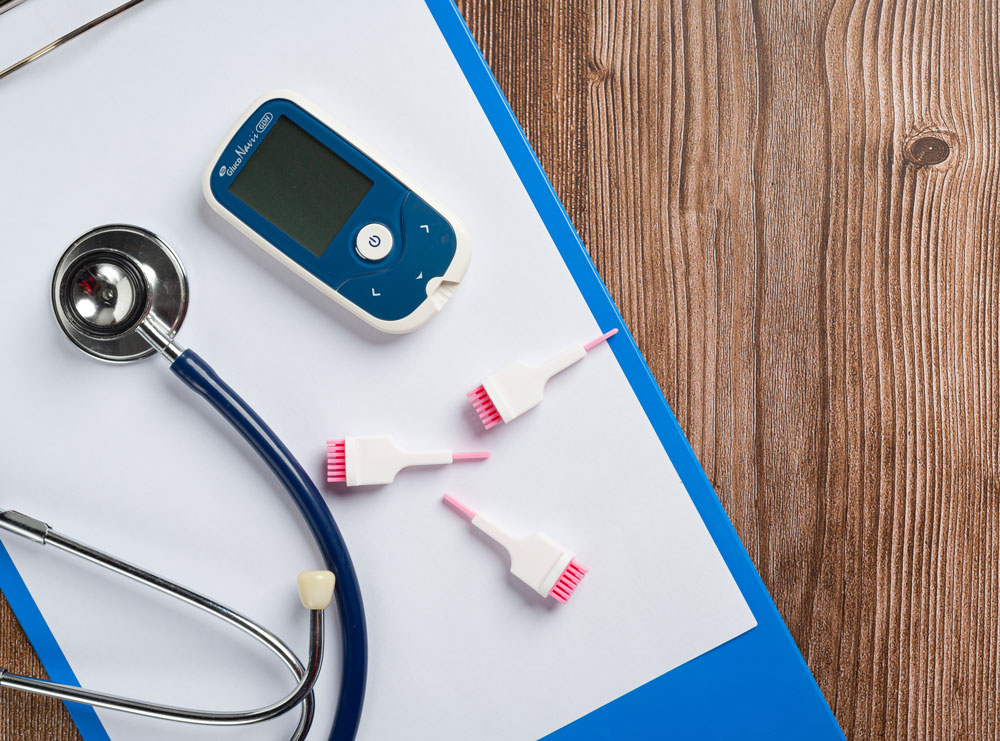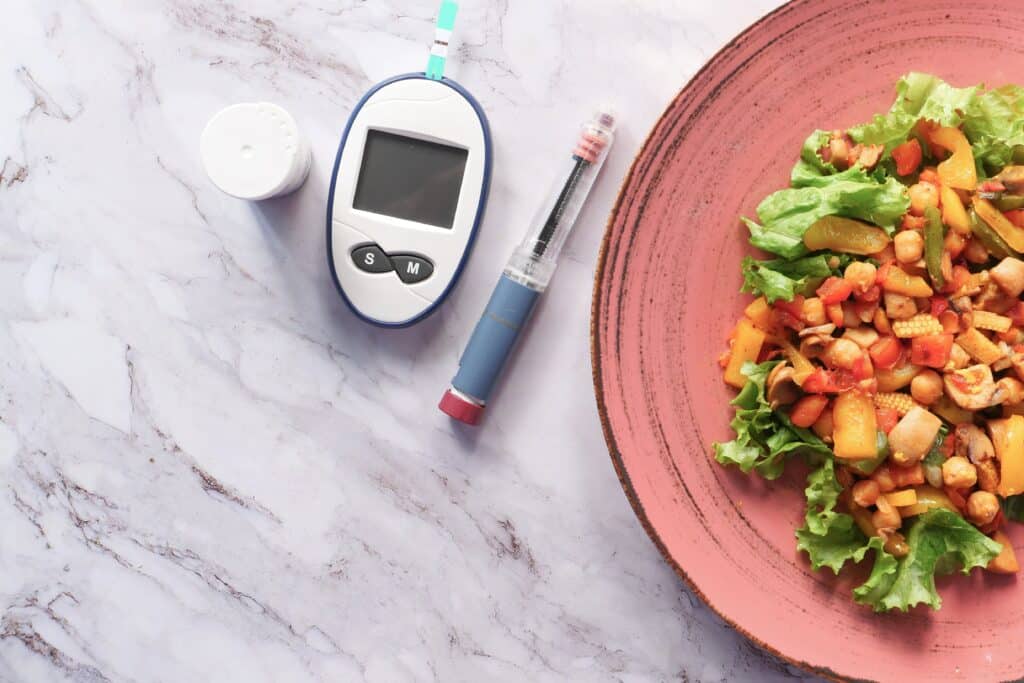If your doctor says you don’t have diabetes after a fasting blood glucose test, should you believe them? Probably not, and here’s why.
Fasting blood glucose (FBG) is a measure of glucose concentration in your blood after you’ve had nothing to eat for 8-12 hours. The test is typically used to monitor patients with existing diabetes, but may also be used to test for prediabetes and full-blown diabetes, a practice that has some significant flaws.
For one thing, FBG can only detect changes in your blood sugar that occur a significant way along the path of diabetes development. The blood sugar fluctuations that take place when you develop prediabetes are a result of insulin resistance, which occurs when excess fatty tissue (adipose) causes cells to stop responding to the instructions insulin is sending out. Your body fights this process when it first begins, generating more insulin to try and get the resistant cells back in line, so any type of blood sugar testing simply reflects the current state of your blood sugar, without detecting the turmoil behind the scenes.
Eventually, your body starts losing the battle against insulin resistance, and then blood sugar starts to rise. By the time an FBG test warns that your blood sugar is too high, you could have suffered irreversible tissue damage and face an extended recovery period – if, indeed, full reversal is still possible. And as if the thought of living with diabetes for the rest of your life wasn’t scary enough, insulin resistance also causes or exacerbates numerous other major health conditions, including heart disease, high blood pressure, and stroke.

That’s not the only problem with FBG
FBG indicates what happens to your blood sugar if you’re not taking in any new supplies of energy through your food. However, it doesn’t provide any information about your body’s response to the things you normally eat, and that leaves a rather large hole in terms of understanding your condition. Furthermore, there are varying interpretations of what constitutes a normal FBG and at what point your FBG score is indicative of developing diabetes.
Researchers looking at glucose profiles in healthy subjects after eating different foods determined that 89 mg/dL or less is a normal FBG, but conventional medics are likely to describe anything under 100 mg/dL as normal, a significantly higher level. This is despite studies like one in the American Journal of Medicine that found people with an FBG score of 95 or higher were three times more likely to develop diabetes than those whose FBG was below 90. Other studies indicate an increased risk of cardiovascular disease in men with an FBG score over 85 mg/dL; lower even than the so-called normal level of 89 mg/dL.
In fact, increasing FBG scores are more likely to indicate end-stage diabetes than help diagnose early signs of prediabetes or insulin resistance. But if FBG isn’t doing the job of identifying patients with developing diabetes, what tests are available that can? The alternatives to FBG are:
- HbA1c, which provides a three-month blood sugar average. This is the primary test used to diagnose diabetes, and it does provide more accurate indicators of prediabetes than FBG, but still lacks specificity.
- Fructosamine, a test not widely used that measures average blood sugar concentrations over a 2-3 week period.
- The oral glucose tolerance test (OGTT), which measures how blood sugar changes after drinking a 75 gram glucose solution.
- Post-prandial glucose (PPG), a measure of blood sugar at one and two hours after eating that uses a less drastic testing method than OGTT to produce the same results. You could have apparently normal FBG results, but at the same time have spikes on your PPG that indicate there’s a problem with how your body is processing sugar.
Another way of assessing your risk of diabetes is a fasting insulin test. This test measures insulin levels in your blood when you’ve not eaten for at least eight hours, and is one of the best early warning signs for insulin resistance – the underlying trigger for diabetes and a cause or aggravating factor in the development of heart disease and many other serious conditions. HOMA-IR (homeostatic model assessment of insulin resistance) combines results from your FBG and fasting insulin tests to tell you what insulin levels you need for effective blood sugar regulation.
In conclusion, the fasting blood glucose test is really of little use when attempting to detect the early stages of diabetes and prediabetes. While it has a role to play in monitoring for patients who already have the disease, PPG, fasting insulin, and HOMA-IR tests are far more likely to identify those crucial early changes that could help you reverse developing diabetes.







